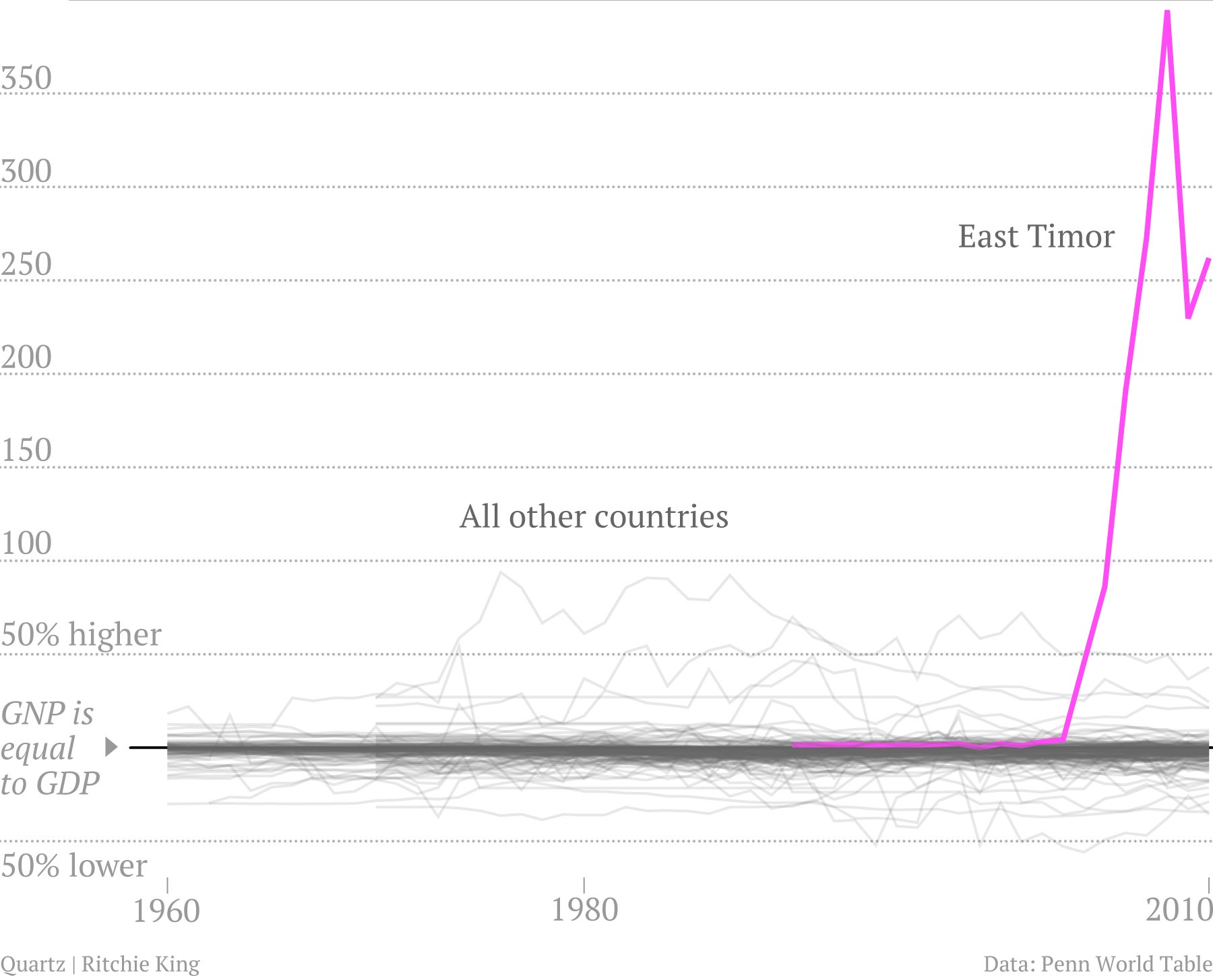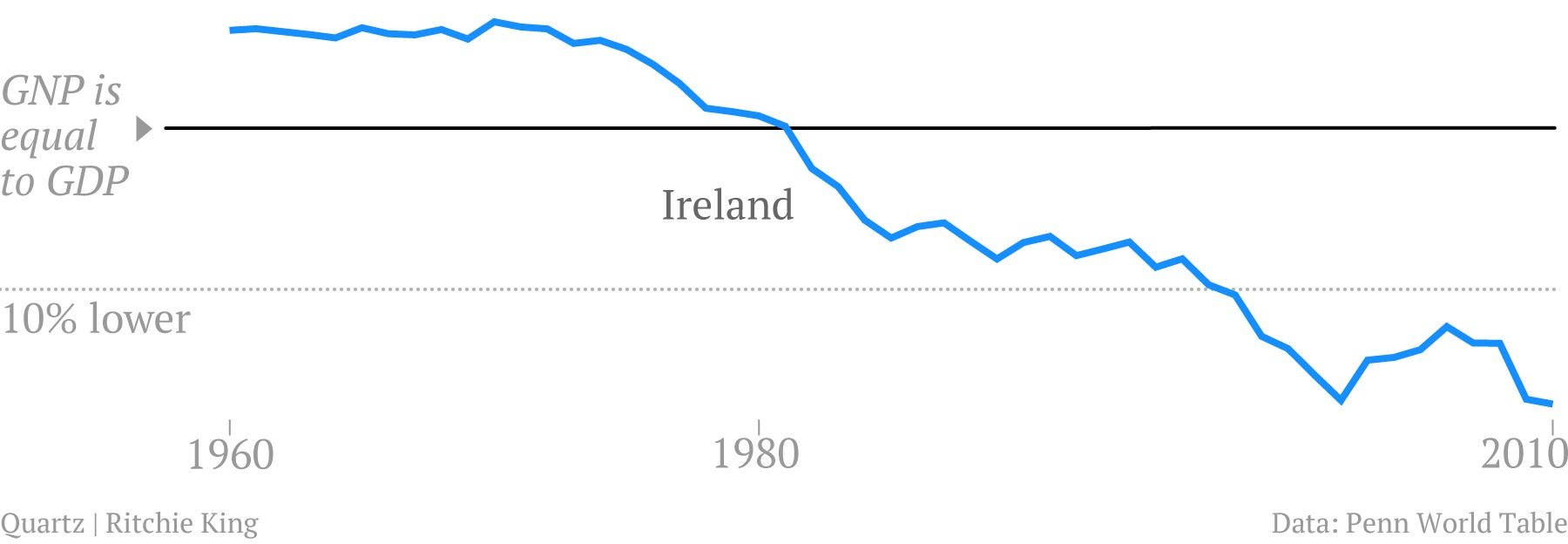Why East Timor’s GNP is four times as high as its GDP
That extreme outlier in the chart above, the one throwing off the entire scale—that’s East Timor. The value shown is the percentage difference between the gross national product (GNP) and the gross domestic product (GDP), two slightly different measurements of the strength of a nation’s economy.

That extreme outlier in the chart above, the one throwing off the entire scale—that’s East Timor. The value shown is the percentage difference between the gross national product (GNP) and the gross domestic product (GDP), two slightly different measurements of the strength of a nation’s economy.
For the vast majority of countries, the values are nearly identical. In the US, for instance, GNP was 1.3% higher than GDP in 2010. In both China and the UK, it was just 0.4% higher. Yet in East Timor, GNP dwarfed GDP in 2010 by 262%.
The difference between the two metrics is right there in the names.
Gross domestic product is the value of all the goods that a country produces and all the services that it provides domestically—i.e., on its own territory. It doesn’t matter if the goods and services are coming from citizens or a foreign-owned company. As long as they are being created on a coutry’s soil or offshore property, they count towards the GDP.
Gross national product, on the other hand, is all the goods and services produced by a country’s citizens or nationals, even if the production happens abroad. This does not include production by foreigners within a country’s borders.
So why is GNP so much higher than GDP in East Timor? Foreign aid.
East Timor became autonomous in 2002 after decades of occupation by Indonesia, whose military attempted to starve Timorese by poisoning their food and destroying large tracts of cropland. Needless to say, the people of East Timor and their economy still feel the impacts of that violence acutely, and the production of goods and services on Timorese soil—the country’s GDP—is very low.
But many countries send aid to East Timor (though its effectiveness is debated). This aid, because it’s coming from overseas, is counted in the same way as compensation for working abroad, so it contributes to GNP but not GDP. Hence the huge difference.
More broadly, the gap between GDP and GNP can say a lot about the nature of a country’s economy. In Ireland, for example, GNP was slightly higher than GDP in the 1960s and 70s, but the ratio steadily fell thereafter until GNP was 17.1% lower in 2010. Ireland is much better off than the Irish. The reason is that favorable Irish tax laws have prompted foreign companies to set up subsidiaries on the island in an elaborate tax avoidance play called the “Double Irish.”

The examples of Ireland and East Timor show the peril in just relying on changes in GDP as the one true litmus test of a country’s economy. An Apple shell company located in Ireland that isn’t employing Irish people and is barely paying taxes to the Irish government is not contributing to productivity in a meaningful way, and aid sent to Timorese might be helping more than GDP would indicate.